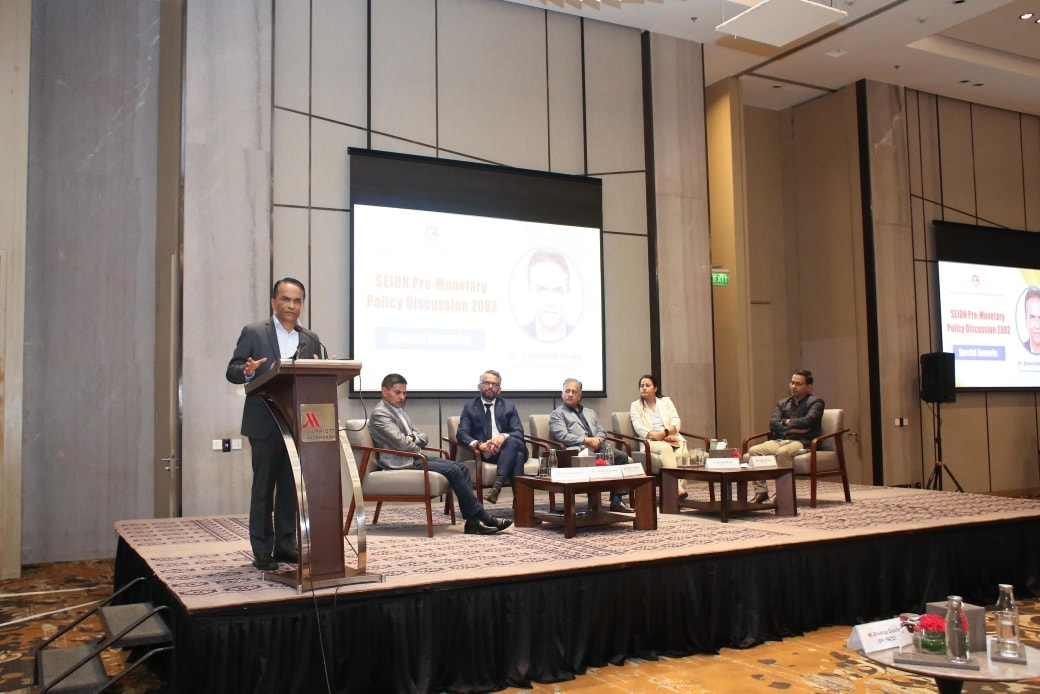The Growing Threat of Nonperforming Loans in Nepal
Nonperforming loans (NPLs) are becoming a significant concern for Nepal’s financial system. Economists have raised alarms about the potential risks that rising NPLs could pose to the country’s economy. These loans occur when borrowers fail to make payments, either because they cannot or do not want to. During periods of economic uncertainty, the number of such loans tends to increase, which can lead to instability within the banking sector.
At a recent pre-monetary policy discussion titled “Tackling Non-performing Loans (NPLs): Role of Monetary Policy in Ensuring Financial Stability,” economist Sameer Khatiwada highlighted the importance of proper measures to address the issue. He emphasized that simply extending loans to avoid bankruptcy is not a sustainable strategy. Instead, he called for thorough assessments and asset quality reviews to identify problematic assets and enhance transparency in banking operations.
An asset management company is expected to play a crucial role in managing bad loans and non-banking assets. The government is working on establishing a dedicated institution to handle the growing volume of bad loans in the financial system. This initiative is seen as a positive step toward stabilizing the sector.
According to the third-quarter financial statements of 20 commercial banks, the average NPL ratio has increased to 4.8 percent, up from 3.65 percent in the same period last year. Nine out of these 20 banks have NPLs exceeding the 5 percent threshold, which experts consider unhealthy for the financial system.
A recent International Monetary Fund (IMF) report also highlighted the risks in Nepal’s financial sector. It pointed out that nonperforming assets have not been effectively addressed due to inadequate restructuring and delays in asset auctions. While Nepal’s external sector remains strong—driven by rising exports, tourism receipts, and remittance inflows—the challenges in the financial sector continue to grow.
The IMF warned that financial sector vulnerabilities have not eased. As of April 2025, NPLs had risen to 5.2 percent, eroding bank capital buffers. The financial condition of savings and credit cooperatives (SACCOs) is also a cause for concern.
Khatiwada noted that while the expansionary monetary policy during the Covid-19 pandemic was appropriate, the subsequent rollback was abrupt, with interest rates increasing too quickly. He stressed the need for coordination between fiscal and monetary policies to ensure both tools work together effectively.
Experts have also expressed concerns that the reported NPL data may not reflect the actual situation. Figures are often underreported, and if loan recovery does not improve, many banks could face serious difficulties. Khatiwada pointed out that during the pandemic, monetary policy took on a heavy burden, which weakened lending standards. Banks started issuing loans more easily, contributing to the current NPL problem.
Nepal Rastra Bank Governor Biswo Nath Poudel emphasized the need for a microeconomic approach that considers climate-related vulnerabilities. He suggested that credit should be directed to reach all segments of the population. He also highlighted the need to address and correct rising NPLs in the agriculture and construction sectors.
Poudel acknowledged that while some economic indicators show improvement, several pressing issues remain unresolved. Rajesh Upadhyay, senior vice-president of the Confederation of Banks and Financial Institutions Nepal, pointed out that despite low interest rates, credit flow has declined, indicating deeper underlying problems. He attributed this decline to a sharp drop in disposable incomes.
Upadhyay added that falling earnings and an increasing number of youths leaving the country for work or education have led to a drop in consumption. Borrowers are struggling to manage their loans due to the economic slowdown triggered by the pandemic and stricter working capital guidelines. He noted that some people are unable to repay their loans even by selling land.
Economist Menuka Karki said that monetary policy appears to supplement fiscal policy in Nepal. She emphasized that private sector problems need to be addressed through either fiscal or monetary policy. The core issue, she added, is the lack of coordination and the failure to make fiscal policy expansionary.
The main objectives of monetary policy include maintaining price stability and balance of payments stability. Santosh Koirala, president of the Nepal Bankers’ Association, called for the government to legally mandate the operation of asset management companies. He argued that while banks have been handling asset management independently, there is a strong need for a separate and empowered institution to manage bad loans effectively.







